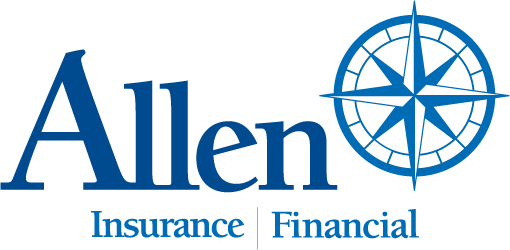As 2023 winds down, your focus may begin turning to holiday planning, family gatherings, and delicious food. You might even entertain the idea of getting your tax documents in order. Consider going a few steps further and preparing for a yearly check-in with your financial advisor to start 2024 with your money matters in good shape.
After all, it’s been a year of changes that will likely affect your finances in one way or another. The passage of SECURE 2.0 in late December changed many retirement plan rules, interest rates have continued rising, and the Supreme Court struck down the Biden administration’s proposed student loan forgiveness program.
How can you get a clear picture of what all of this means for your financial planning? By scheduling time to connect with your trusted financial advisor, of course. So, before you head to your annual meeting with your financial advisor, read over these questions and use them as a helpful guide for your conversation.
1. Can I Contribute More to Retirement Funds?
Although the state of the economy might make you hesitant about setting additional income aside, consider whether you’re financially able to maximize (or increase) contributions to your workplace retirement plan. At the very least, find out whether you’re contributing the minimum to take full advantage of any employer match benefit. Increasing your contributions to a traditional IRA is another option, though you should be mindful that those with higher incomes may not qualify for a tax deduction.
2. Do I Have FSA Dollars to Spend or Carry Over?
Use what you can from your flexible spending account (FSA) and check your employer’s plan to see whether unused funds can be carried over to the next plan year. Although the rollover option applies to your employer’s plan year rather than the calendar year, this year-end assessment is a good reminder to ensure that you’re on track. If permitted, the maximum FSA carryover amount is $610. If you have a dependent care FSA, you can save as much as $5,000 (family limit) or $2,500 (married filing separately) in 2023.
It’s also a great time to discuss maximum health savings account (HSA) contributions if you have a high-deductible health plan (HDHP). This can be a complex topic, so it’s a great idea to tap into your advisor’s knowledge to learn more.
3. Should I Consider Roth Conversions?
If you have some room in your current tax bracket before reaching a higher federal income tax rate, you may want to consider doing a Roth conversion. This would involve converting some of your pre-tax retirement savings, like in a traditional IRA, into a post-tax account, like a Roth IRA, so you’d never have to pay taxes on future earnings. Taxes would be paid upfront on the conversion amount, and you’d enjoy tax-free growth in the future. If this interests you, discuss this strategy with your advisor, who can help determine whether it’s an ideal time to do a conversion. Your advisor can also run projections to see whether you would pay less in taxes over time with this strategy.
4. What Is Tax-Loss Harvesting?
If some investments in your portfolio have suffered a loss, the end of the year is a common time to consider whether it makes sense to harvest losses by selling them. Doing so can offset gains you have realized in your portfolio as well as up to $3,000 of your earned income. Tax-loss harvesting can get complex, so this is a great topic to seek professional help on. Be aware: Investments can be repurchased only after a certain period; selling a security for a loss and buying back within 30 days does not qualify.
5. Do My Charitable Donations Qualify for a Tax Deduction?
Charitable contributions donated directly to a qualified charity or a donor-advised fund can help you get a federal tax deduction. Keep in mind, however, that this is often beneficial only if you’re itemizing. It’s worthwhile to discuss with your tax professional whether your charitable contributions, in addition to other deductions, will surpass your standard deduction. For those older than 70½, a qualified charitable distribution (QCD) may be a viable option. In addition, 2023 is the first year QCD distributions (up to certain limits) are allowed to be gifted to charitable remainder trusts or charitable gift annuities, which could provide you with a right to income.
6. What Should My Strategy for Stock Options Be?
If you have vested stock options included in your compensation package from your employer, now may be a good time to consider whether it would be more beneficial to sell them in January 2024 as opposed to this year. Review your stock option statement and plan document with your tax professional and discuss which year offers the best opportunity from an income tax perspective.
7. Do I Need to Think About RMDs?
Some retirement accounts are subject to required minimum distributions (RMDs). This means once you near age 73, you may be required to start taking distributions from your retirement accounts, owing taxes on the way out. It’s common for people to forget to take RMDs. What’s more, recent legislation has made them a bit more complex, so RMDs for retirees and their beneficiaries are best planned with your advisor to be sure that you’re following the rules.
8. When Do I Need to Resume Repaying Student Loans, and Do I Qualify for Student Debt Relief?
As a result of the Supreme Court overturning the Biden administration’s proposed student loan forgiveness program, federal student loans resumed accruing interest on September 1, 2023, with payments resuming in October 2023. Those payments are subject to a 12-month on-ramp transition period during which default will be waived for nonpayment. The Biden administration has launched a new, income-driven student loan repayment plan—the Saving on a Valuable Education (SAVE) plan. A website for that plan can be found here. To get the latest information, consult this helpful factsheet and sign up for updates on the U.S. Department of Education website.
9. Should I Update My Estate Plans?
It’s always a good idea to review estate plans as part of year-end financial planning. As life events happen, such as marriage or the birth of a child, your estate plan should be updated with your attorney. At the end of each year, discuss with your family how life events over the past year might affect your estate planning. When you meet with your advisor, be sure to update and review beneficiary designations, trustee appointments, power-of-attorney provisions, and health care directives. Also, the amount that may pass free of federal estate tax is scheduled to be reduced by approximately half in 2026, so you may need to plan for that.
Take Advantage of Your Advisor’s Knowledge
Although this year-end financial planning checklist covers a lot of ground, it’s intended to serve as a springboard for planning conversations with your financial advisor. This checklist provides an excellent starting point to discuss issues and deadlines most relevant to you. New strategies becoming available (e.g., rollovers from a 529 plan to a Roth IRA for the 529 beneficiary, subject to certain time restrictions and requirements) may also be worth discussing. Beyond that, be sure to add anything else you want to know to this list so you don’t forget to inquire. An annual planning meeting is a great time to ask questions you need answered regarding your financial plans for the coming year.
These tools/hyperlinks are being provided as a courtesy and are for informational purposes only. We make no representation as to the completeness or accuracy of information provided on these websites.
This material has been provided for general informational purposes only and does not constitute either tax or legal advice. Although we go to great lengths to make sure our information is accurate and useful, we recommend you consult a tax preparer, professional tax advisor, or lawyer.
© 2023 Commonwealth Financial Network®











